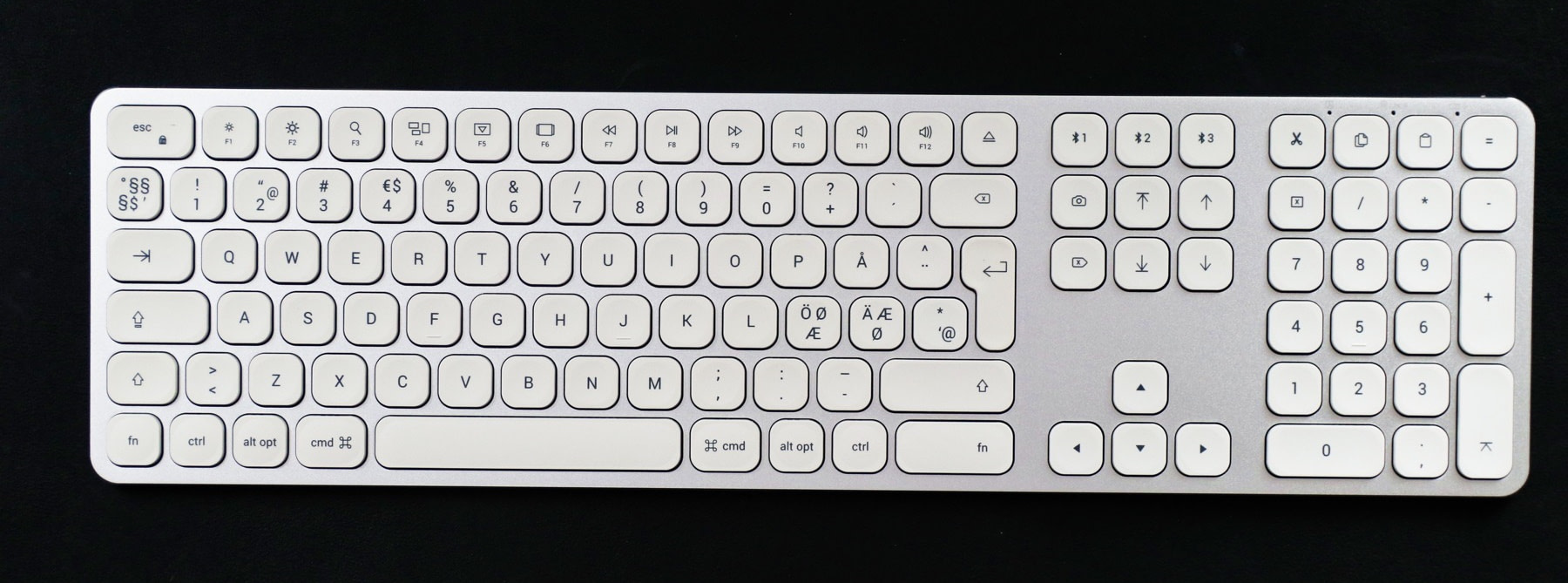
Now, I’m sure there’s a purist out there somewhere, screaming at his monitor that this doesn’t match the One True Keyboard Layout. The good news, however, is that you have four extra function keys you can use for whatever you want (I went with music controls), which gives us the following effective keyboard: You could probably overcome this using AutoHotkey, but I didn’t bother trying. The only problem is that Function and Eject are not recognized by SharpKeys, and hence we can’t do anything with them.
#Apple computer keyboard windows
We’ve now fixed almost everything: the Windows and Alt keys are swapped back to the way they should be, and we get our handy Print Screen, Scroll Lock, and Insert keys back. So, with this in mind, I suggest the following SharpKeys remapping: The Eject and Function keys don’t do anything.There’s no Print Screen, Scroll Lock, Pause/Break, or Insert keys.The Windows and Alt keys are swapped, on both the left and right of the spacebar.The first step here is to identify the problem children when using the keyboard with stock settings: But if you’re anything like me, you probably want your shiny new device to match the functionality of a standard keyboard layout as closely as possible. The good news is that the keyboard itself is plug-and-play with a Windows machine, with almost everything working as expected. Setting Up SharpKeys For The Apple Keyboard You don’t have to write any scripts, just a few clicks is all you need to set yourself up permanently. So, I went with SharpKeys, which has the added bonus of being much easier to use than AutoHotkey.
#Apple computer keyboard code
But again, since I’m a little obsessed with efficiency, it just wouldn’t do for me to have a script that starts up with Windows on every boot, eating precious CPU cycles while I wait for code to compile.

The former runs as a script in the background that intercepts key presses and can make them do something else entirely, like a multi-key press macro, which makes it far more powerful. Your two choices here are AutoHotkey and SharpKeys. There are a few quirks to using an Apple keyboard on a Windows machine, of course, but nothing we can’t fix with some program downloaded off the internet. I’ve been using it for over a week now, and I’m happy to report that it’s the best feeling keyboard I’ve ever used, so I highly recommend it. So wasn’t I pleasantly surprised to learn that Apple’s standard wired keyboard is only $50, when anything comparable from Logitech, Microsoft or SteelSeries was double the price and double the ugly.

Wireless tech is cool and all, but until it’s been better refined I’ll stick to untangling my rat’s nest of cables once a year, thanks. And forget this wireless nonsense of pairing devices and changing batteries all the time. I feel like I’m wasting so much energy when I’m pushing an old clunky mechanical key down into the Earth’s mantle just to get one lousy letter out of it. I’m all about efficiency, so I’ve come to love laptop-style chiclet keys than only need to be depressed a few millimeters. No crazy rainbow LED backlighting, no built-in LCD that tells you the weather and suggests going outside for some exercise, no customizable command macros, just a simple keyboard I can write code and game with. Sorted by importance, they go a little like this: My requirements in a keyboard are simple enough, really. But when I started looking for a nice keyboard to go with my new desktop build, I quickly realized that my desires aligned quite nicely with those of our late pomaceous demigod, The Almighty Steve.


Now personally, I’m not exactly a big Apple fan, especially since some of their hardware tends to be a little overpriced.


 0 kommentar(er)
0 kommentar(er)
